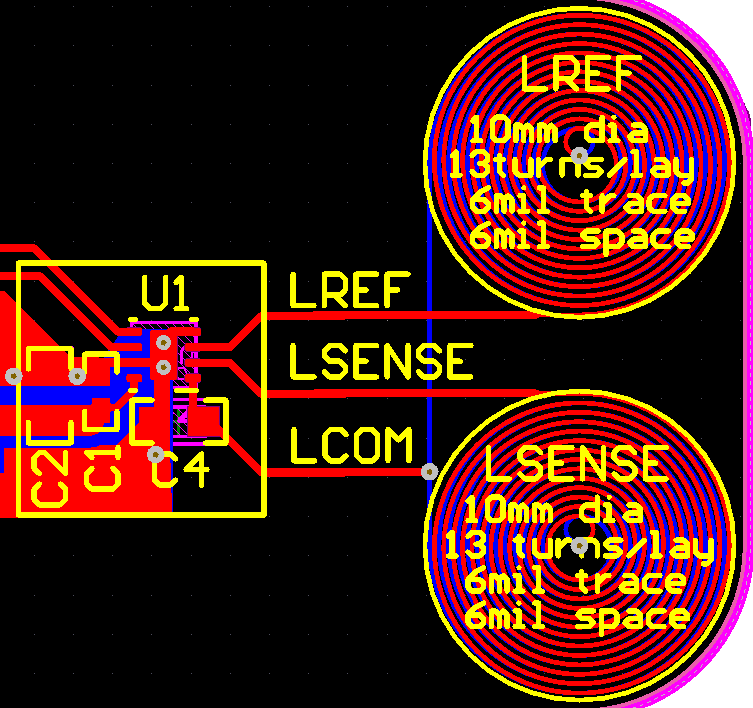ZHCSET4B December 2015 – April 2024 LDC0851
PRODUCTION DATA
- 1
- 1 特性
- 2 应用
- 3 说明
- 4 Pin Configuration and Functions
- 5 Specifications
- 6 Detailed Description
- 7 Application and Implementation
- 8 Device and Documentation Support
- 9 Revision History
- 10Mechanical, Packaging, and Orderable Information
7.4.2.1 Side by Side Coils
The use of side by side coils is recommended for many applications that require a 2 layer PCB or that require very accurate temperature compensation. For side by side coils it is recommended to put them on the same PCB, even if using a remote sensing application. This will keep the tolerances and mismatch between the coils as small as possible. An example layout of side by side coils is shown in Figure 7-10.
 Figure 7-10 Side by Side Coil Layout Example
Figure 7-10 Side by Side Coil Layout Example